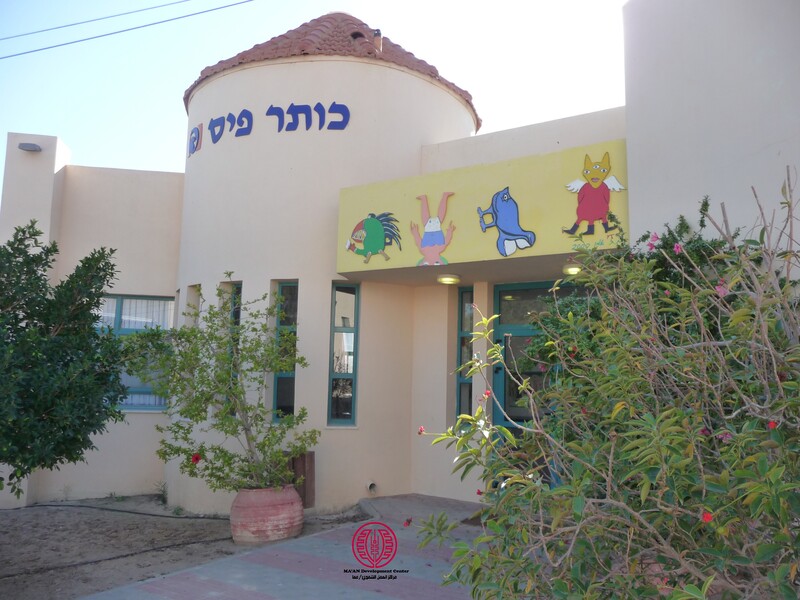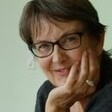Rights and Accountability 15 April 2012
A new report by Maan Development Center exposes the sharp contrast in living conditions between Palestinians and illegal settlers in the occupied Jordan Valley. Israeli policies facilitate the extravagant lifestyle of Jewish settlers at the expense of the basic rights of Palestinians. Palestinians are denied access to their own natural resources, while Israeli settlers can fully profit from the rich agricultural land and abundant water resources of the valley. Water, education and health facilities are segregated.
The Jordan Valley and Dead Sea area covers about one third of the West Bank and is one of the most isolated and restricted areas in occupied Palestine. Israel exercises full control over 95% of the Jordan Valley – so-called Area C, prohibiting Palestinians from freely using their land. About 56,000 Palestinians live in the Jordan Valley and 9,500 Israeli settlers have established 37 settlements in the area.
Settlement expansion financed with subsidies
The June 1967 war drove thousands of Palestinian from the Jordan Valley. Immediately after the war, Israel began to invest heavily in settlements in order to transfer its citizens to the area. However, Article 49 of the Fourth Geneva Convention explicitly prohibits Israel - the Occupying Power - from deporting or transferring parts of its own civilian population into the territory it occupies.
Palestinians are almost completely prevented by Israel from any sort of development in the area. Instead, settlement expansion is heavily subsidized by the Israeli government and various independent organizations. Settlement development in the north of the Jordan Valley focuses mainly on agriculture, while in the south – near the Dead Sea – tourism is central.
All the settlements in the Jordan Valley benefit from Israel’s policy of ‘National Priority Areas.’ The policy aims to encourage migration to the settlements by providing subsidies for housing, education, agriculture and industry and preferential taxation rates. For example, between 2000 and 2006, settlers in the West Bank paid 60% less taxes than Israeli citizens in Israel proper.
In addition, settlements receive direct financial support on the initiative of individual ministers. Local settler municipalities play a key role as intermediaries between the national government and the final beneficiaries – the settlers. “We are in charge, or we make sure we get the services we are entitled to,” says a member of the Regional Council in an interview.
The settlements also receive significant financial support from Zionist organizations abroad such as the One Israel Fund, the Jordan Valley Development Fund, and the Shiloh Israel Children’s Fund.
Foreign companies also benefit from the tax system if they work within the settlements. The Ministry of Industry, Trade and Labor offers a 50% reduction on research and development centers. Foreign companies are eligible for a further 20% investment grant for specific projects that are undertaken in these centers.
Discriminatory water policies
In the occupied Jordan Valley, water is one of the most valuable Palestinian natural resources; it flows in underground aquifers, natural streams, and the Jordan River. However, Israeli discriminatory policies deny Palestinians access to their water. Instead, Palestinian water is plundered to supply the extensive settler agricultural industry and the settlements - including large “settler only” swimming pools. The vast majority of the settlements own a swimming pool.
Immediately after the occupation in 1967, Israel took complete control of all water sources in Palestine and denied Palestinians access to the Jordan River. The Israeli water company Mekorot began digging deep wells for settlers and has connected every Israeli settlement in the Jordan Valley to the Israeli water network, taking advantage of government subsidies. The wells have dried up the water resources available to Palestinians who are not allowed to dig such deep wells.
Moreover, Israel has demolished Palestinian wells, cisterns, and other water sources and infrastructure. For example, in 1967 there were 774 operational wells and in 2005 only 328 were left. In addition, Palestinians are denied permits to construct new water structures, whereas such permits are quickly provided to settlements.
The Joint Water Committee (JWC) - consisting of Israelis and Palestinians - is meant to oversee and authorize water projects in the West Bank. The JWC has no authority over the Israeli settlements but provides Israel with a veto right over Palestinian water decisions. According to the World Bank, 106 Palestinian water projects and 12 large-scale waste-water projects are awaiting JWC approval, some since 1999. In addition, Palestinians have to ask the Israeli Civil Administration for approval of Palestinian water projects in Area C, creating additional bureaucratic obstacles. Only one Israeli project has been denied since 1993.
The amount of piped water available to Palestinians is a fraction of the piped water available to settlers living in a nearby settlement. For example, settlers in Yitav consume 317 liters per day and Palestinians in nearby Ras al-Auja only 30 liters. In Ro’I settlers can use 431 liters and Palestinian in nearby Al-Hadidiya a meager 20 liters.
Due to Israel’s discriminatory water policies, about 67% of Palestinians in the Jordan Valley are forced to purchase water in tanks from Mekorot, which is very expensive. Water from a network costs 2.6 NIS (US$ 0.70) per cubic meter, but the price of water from a water tank is 5 to 14 times higher.
No Israeli funds for education of Palestinian children
Nearly 95% of the Jordan Valley is designated as Area C and falls under Israeli military control. The Israeli government therefore has an obligation to provide education for Palestinian children living in the area, but Israel prevents Palestinian children from attending settler schools, which are the sole beneficiaries under the education budget. The Palestinian National Authority (PNA) tries to help but cannot provide any sort of substantial educational assistance to Area C. The budget in many Palestinian schools is so low that large portions of the annual budget are dedicated to simply making copies of textbooks. For example, the school in the Palestinian village of Marj Na’aje serves 200 children. The PNA provides funds for salaries, but the school has to rely for running costs on donations from the 800 villagers, 40% of whom are unemployed. One third of the available NIS 6,000 (US$ 1,600) is spent on copy machine paper.

School for Palestinian children in Area C of the Jordan Valley (Photo: Maan Development Center)
About 10,000 Palestinian children from Area C started the school year learning in tents, caravans, or tin shacks which lack protection from the heat and cold. Nearly a third of Area C schools lack adequate water and sanitation facilities. In addition, at least 23 schools serving 2,250 children in Area C have pending stop-work or demolition orders.
The limited assistance of the PNA fails to offer adequate incentives, and this contributes to the shortage of Palestinian teachers. Many of the teachers are either volunteers or interns from other parts of the Jordan Valley or West Bank. The shortage of teachers causes a high student to teacher ratio in the region. In addition, the closures and checkpoints often delay the teachers and result in students suffering from an irregular curriculum and the intermittent presence of trained professionals.

School for Jewish children in Area C of the Jordan Valley (Photo: Maan Development Center)
The situation of Jewish children in the Jordan Valley is completely different from that of Palestinian children in Area C, because the government provides educational facilities for settler youth. Moreover, the settlements receive more assistance than Israelis who live in Israel. For example, the salaries of teachers in settler schools are 12-20% higher than in Israel. In addition, the government covers 80% of their rent and all travel costs, and grants other benefits. Settler schools are improved by additional government funding which is used for extended school days, computer systems and costs of transport for the students. Informal education institutions in the Jordan Valley also receive generous funding.
Maan’s report also highlights discrimination in other areas such as health care, freedom of movement, access to land, and recreational space for children. The numerous facts presented in the report reveal a consistent pattern of superfluous provision of benefits to settlers in sharp contrast to numerous restrictions on Palestinians and denial of their rights. Israel stimulates the transfer of Jewish citizens to the occupied Jordan Valley by subsidizing their luxurious lifestyle, while Palestinians face harsh conditions due to systematic racism and the persistent denial of their rights.






Comments
Maan Development Centre Report
Permalink Yonah Zvi replied on
Sadly, I conclude that the political currents now dominant in Israel are intent on a policy of gradual ethnic cleansing, through infiltrating ever more Israeli citizens (but only Jewish citizens of Israel) into the occupied territories, and through making life hard for the indigenous Palestinians with the intention that, gradually, they will give up their residency and move to other countries to join communities of Palestinian refugees there. But if you think I am wrong as to the intention, tell me what other conclusion is more plausible, based on these facts on the ground. (signed: a former Zionist, may God forgive me.)
No you are not wrong,
Permalink Chris Whitman replied on
No you are not wrong, unfortunately. It seems that the policies Israel is enacting is meant to encourage Palestinians in the Jordan Valley to 'voluntarily' leave. It cannot be as open or forceful as it was in the first 50-60 years of its existence and at the same time, Palestinians are more steadfast now in the Jordan Valley than they have been at most other times, so there is hope.